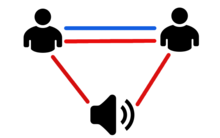This article's tone or style may not reflect the encyclopedic tone used on Wikipedia. (August 2012) |


An interest graph is a digital portrayal of an individual's specific interests.[1] Its perceived utility and value stem from the premise that a person's interests form a significant component of their personal identity. They can be used as indicators of various aspects, such as a person's preferences regarding activities, purchases, destinations, as well as who they may choose to meet, follow, or support politically.[2]
- ^ rr11. "How the Interest Graph will shape the future of the web" Archived 2015-03-20 at the Wayback Machine, MIT Entrepreneurship Review, Cambridge, 1 April 2011. Retrieved on 11 March 2013.
- ^ Tullman, Howard A. "Where Social Media Will Take Us in 2013", Inc.com, 28 December 2012. Retrieved on 11 March 2013.